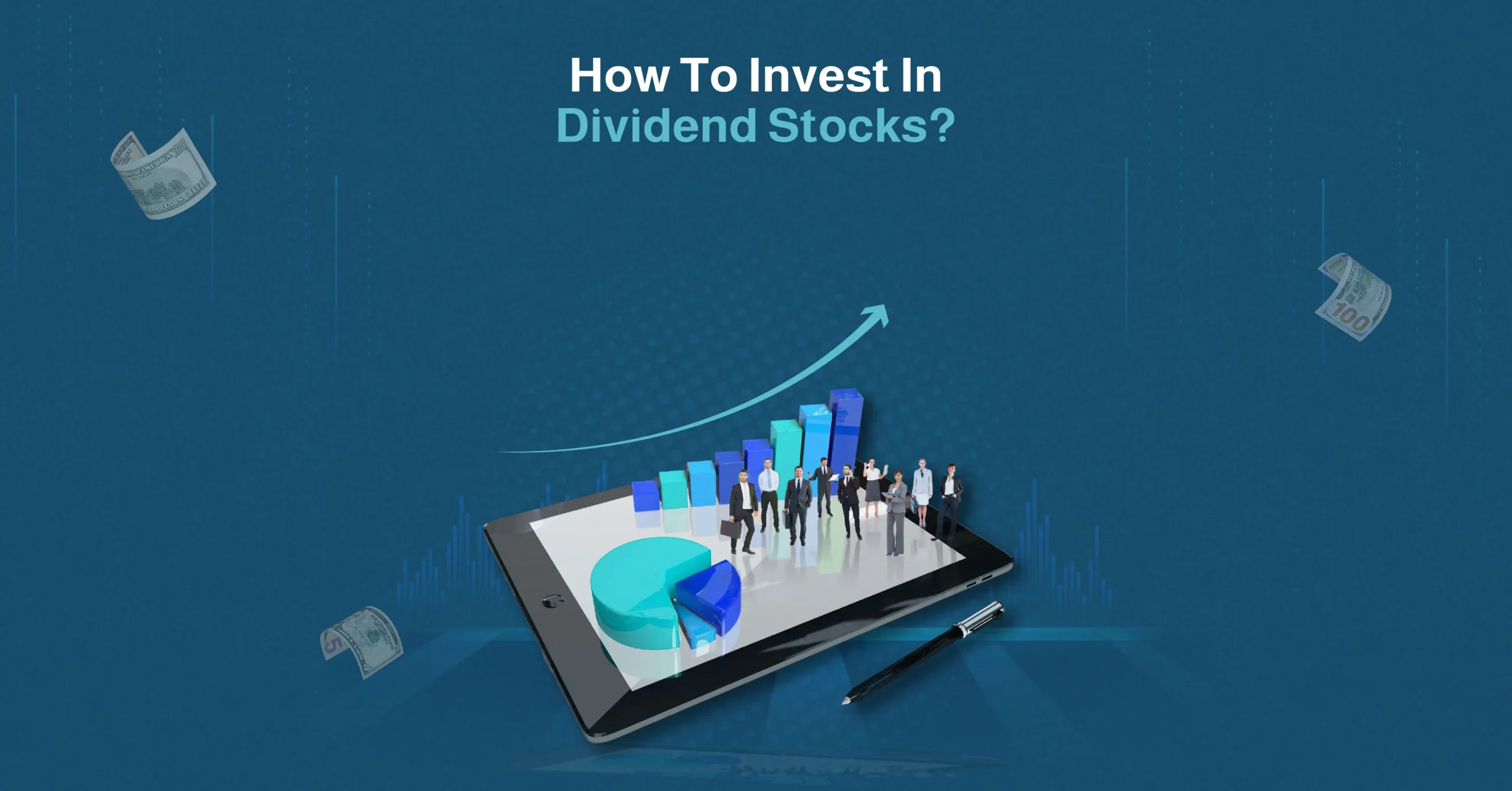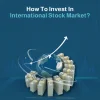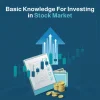Dividend investing is appealing to investors who don’t want to spend their time watching the markets. It is a good way of providing additional income and growing your wealth. Dividend stocks are shares in companies that regularly return part of their profit to the shareholders in the form of cash payments.
The balance between growth and stability is what makes dividend stocks attractive to many investors. They differ from speculative stocks as they do not rely solely on price appreciation, but rather, dividend-paying companies can reward you for simply holding their shares. These payouts can be reinvested to buy more shares, which will grow your portfolio quickly.
Have you been curious about how to invest in dividend stocks? Well, this beginner-friendly guide will cover the basics, why certain companies are appealing to long-term investors, and how to choose the right one to reach your investment goals, allowing you to get started with confidence. No matter your location, with guide will offer practical advice to get you started.
More topics can be read on the Gamma blog
How to invest in dividend stocks – Getting started
The start of your investment adventure and building wealth begins with opening a brokerage account, which will allow you to buy and sell shares. There are many international platforms available. Look for platforms with low fees, good research tools, and easy account management. Once that has been successfully completed, we can move on.
We can move on to the next step, which is getting yourself well acquainted with the terminology. Starting with the dividend yield, which is the annual dividend payment divided by the share price, this will show you how much income you can expect from relative to your investment. The next term is payout ratio, which tells you how much of a company’s earnings go towards dividends; a lower ratio means there is room to grow. Ex-dividend date refers to the cut-off date for receiving the next dividend. If you buy after this date, you will need to wait until the following year for the next payout.
When you are starting, we suggest sticking to sectors known for their stability. Utilities, consumer staples, and healthcare companies often maintain consistent dividends regardless of market uncertainties. Luckily, you don’t need much capital to get you started; even a modest amount can grow over time if you continue to reinvest your dividends.
We would advise setting realistic expectations. Dividend investing is best suited to a long-term strategy rather than a quick turnover asset. Building a strong foundation usually requires reinvesting your payouts, monitoring your portfolio, and regularly adding funds.
Last but certainly not least, diversification. Remember to spread your investments out over a variety of sectors and regions to reduce your risk. If a company reduces its dividends, your overall income will remain fairly steady. By taking these steps, you are setting yourself up to build a portfolio that works for you year after year.
Why dividend-paying companies appeal to long-term investors
Dividend-paying companies are appealing as they combine the potential for share price growth with the stability of regular income. That balance is great for long-term investors as they can ride the ups and downs of the markets without too much fear of huge losses.
A huge advantage for investors is the power of compounding. By reinvesting your dividends, you can purchase more shares, which will then, like the previous shares, generate more income. Essentially, snowballing with each reinvestment, and over a few years, this can grow your portfolio in a meaningful way, even if the share price grows incrementally.
The psychological benefit these companies offer is invaluable; the steady income they provide makes it easier to stay invested during more volatile periods of time. Volatility often leads to panic offloading, but this is not the case for dividend investors, who continue to receive an income from their investment.
The dividend-paying companies are already established market leaders in sectors such as consumer staples, healthcare, and utilities. These companies provide services and goods that are essential to day-to-day life, so even when the economy is a little slower than usual, they still hold up.
For both Saudi and international investors, dividend stocks can act as a steady anchor in a diverse portfolio. This type of investment should not be viewed as a quick fix, as it will not yield dramatic short-term gains of a high-growth option. They can provide more value through the predictability of a recurring income, which can be reinvested to build wealth or used to fund everyday expenses.
Dividend-paying companies appeal to long-term investors as they combine growth potential, income, and resilience, all of which are essential for building wealth over time.
What to look for in a good dividend stock
When you are learning to invest in dividend stocks, you need to know how to analyze the options to ensure you end up investing in the best option for your portfolio and your objectives alike. There are a few core metrics that will help you spot the quality companies that may be worth your time.
-
- Dividend Yield: Shows the annual dividend as a percentage of the share price. A moderate yield of around 3-6% can offer income without excessive risk.
- Payout Ratio: Tells you how much of the company’s earning goes towards dividends. The lower this ratio is, the greater the chance that the payouts will be sustainable.
- Dividend Growth History: Consistently increases over the years, which suggests financial strength and management commitment.
- Earnings Stability: Steady profits support reliable dividends through different market conditions.
- Debt levels: High Debt can strain a company’s ability to keep paying.
We have included a quick reference table to help.
| Metric | What it means | Why it matters |
| Dividend Yield | Annual dividend ÷ share price | Shows potential income relative to investment |
| Payout Ratio | % of earnings paid as dividend | Indicated the sustainability of payments |
| Dividend Growth History | Record of Increasing Payouts over time | Suggests financial stability and management commitment |
| Earnings Stability | Consistency of profits | Supports reliable dividend payments |
| Debt levels | The company’s debt-to-equity ratio | Lower debt reduces payout risk |
This may sound crazy, but try to avoid chasing the highest yields, especially if you have not considered the company’s fundamentals. Deciding how to invest in dividend stock means making the smart decision, and a yield that looks too good to be true, usually is. As an investor, you need to balance yield, stability, and growth potential to build a dividend portfolio that will deliver steady income and long-term value.
Risks to know before you invest in dividend stocks
When it comes to investing, risk is a natural part of reward. This is true with dividend investing, too; even the most reliable dividend stock carries some form of risk. That is why it’s vital to understand how to invest in dividend stocks for long-term income. We will take a closer look at some of the potential risks investors may face.
Dividend cut: If the company’s profit declines, it may stop paying dividends or reduce them. This is a likely scenario during an economic downturn or industry-specific challenges. This will lower both your income and share value.
Market risk: Dividend-paying companies tend to be more stable, but it doesn’t mean they are not susceptible to broader market trends, changes in interest rates, or geopolitical events.
Currency Risk: The exchange rate for investors buying foreign dividend stocks. The fluctuations may affect the value of the payout in your currency.
Sector Concentration: Focusing too heavily on one sector can leave you vulnerable to market shifts. Utilities and real estate can face regulatory or interest pressures.
Inflation: If dividends grow slowly, inflation may erode the real value over time, which will in turn reduce your purchasing power.
By diversifying your portfolio, you should be able to manage some of these risks. Careful research and regular portfolio review will ensure you are investing in the best possible dividend stock for your objectives. Ensure that you spread your investment across multiple sectors and regions, focusing on companies with proven track records of maintaining steady payouts. If you balance risk and reward, you can keep your dividend strategy sustainable for years.
Gamma Assets: A property-based way to generate passive income
In the same way that dividend provides a recurring income, Gamma Assets gives investors access to fractional real estate ownership, with returns backed by tangible properties. It is a great place for new investors to start. For those learning how to invest in dividend stocks, Gamma Assets offers a similar long-term approach, the difference being the less volatile assets rather than equities.
Investor can get started with their investment with as little as 500 SAR, gaining exposure to professionally managed properties that will generate rental income. This works well in a portfolio to support dividend stocks through diversification and a hedge against market swings. By combining strategies, you can create a balanced income stream that grows steadily over time.
You can start investing now from the Gamma Asset Investment Platform
FAQ
Are dividend stocks good for beginners?
Yes. Dividend stocks are often a good starting point for new investors because they belong to well-established companies with stable earnings. They provide two benefits: the potential for share price growth and regular income through dividends. Beginners can use this income to reinvest, accelerating portfolio growth over time. They’re also a useful way to learn how to invest in dividend stocks without relying on constant buying and selling.
How often do dividend stocks pay out?
Most companies pay dividends quarterly, although some pay monthly or annually. The payment schedule is set by the company’s board and announced before the ex-dividend date. For investors, this means knowing when payouts happen helps with planning cash flow and reinvestment strategies. When learning how to invest in dividend stocks, check the company’s dividend history to understand its consistency.
Can I earn enough from dividends to replace my salary?
It’s possible, but it usually takes time and significant capital. The income depends on the dividend yield, the amount invested, and whether dividends are reinvested. For example, a 4% yield on $100,000 would generate $4,000 annually. Most investors start small, reinvest dividends, and gradually build a portfolio large enough to generate meaningful income. Pairing dividend investing with other strategies, like real-estate-backed assets from Gamma Assets, can help create a diversified path toward income replacement.













